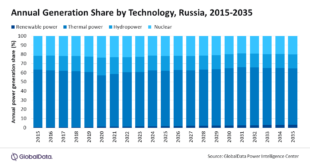David Celine explains how implementing a cathodic protection system that deciphers data in a decisive manner provides the asset manager with peace of mind
Asset failure can be costly and catastrophic – who can forget the Viadotto Polcevera bridge collapse in Genoa in 2018 that killed 43 people?
To prevent similar occurrences, cathodic protection (CP) systems can be used to protect infrastructure assets from corrosion.
Corrosion of the steel in the Genoa bridge caused it to collapse. For asset managers in charge of bridges, steel pilings or dock walls installing a CP system can prevent this and extend the life of the structure.
Most asset managers are not experts in CP and have little interest in how it works, their primary concern is that the assets are maintained to application standards, thus optimising operational life.
For those with only a few structures to maintain, manual techniques are adequate. However as the number of structures increases, it’s vital to introduce remote monitoring to keep track of the performance of these CP systems, and consequently the health of the assets being protected.
Big data, big challenge
CP systems can collect huge amounts of data, including identifying damaged anodes and surveying depolarisation decays and AC power failures. The challenge for the asset manager is knowing which data is relevant in keeping the asset structurally sound.
Often relying on a bi-annual visit by a CP consultant who analyses data and summarises the state of assets, reporting any corrosion and highlighting points of potential concern – like an advisory notice when a car has its annual ‘pink slip’ safety check.
Port of Melbourne – biggest CP system in the world
The team of asset managers at the Port of Melbourne found themselves in such a predicament. Having collected data over a two-year period they struggled to sift through it to answer whether the port’s assets were fully protected, operationally optimised and what intervention was required, if any.
Assets at the port were also at risk of accelerated low water corrosion, a severe form of localised corrosion. Any kind of delay in identifying a problem could compromise the structural integrity of an asset and place it at risk of failure.
The Port of Melbourne is primarily a container port with over 30 berths, 21 kilometres of waterfront over 500 hectares of land. It is fitted with one of the world largest cathodic protection systems, which has over 700 individually controlled zones of protection and more than 1200 reference electrodes.
All the port’s CP systems are managed remotely through 22 data collections points. The data is collected and stored in a secure cloud-based SQL database and accessed through a web portal and REST interface for remote monitoring and control.
To enable the port to decipher the data more efficiently, Omniflex developed a ‘traffic light’ system to clearly show the performance of CP assets in real-time and pinpoint any potential risks or failures.
Red indicates an asset is unprotected and therefore requires immediate action, amber signifies a potential problem despite the asset not yet compromised but requiring action, and green which shows the asset as being fully protected.
The CP management system extracted and analysed data from 50,000 individual points and implemented analytical algorithms that triggered a simple visual indication depending on the status of each. This provides a quick overview of protection from corrosion of each data point across the entire estate assets.
Omniflex also built in a daily email notification system so any changes were communicated quickly to the team so any necessary action could be taken.
Omniflex’s traffic light CP monitoring system solution provides the port’s asset managers with a top-level health status of all their assets in real time. Building in a user-friendly interface and daily notification function gives them the peace of mind that their vast assets are protected.
Additionally, the system provides timely alerts to highlight any potential for failure and could eliminate devastating events like the bridge collapse in Genoa from ever happening again.
David Celine is managing director at remote monitoring specialist Omniflex. David will be sharing his thoughts on cathodic protection at the Australasian Corrosion & Prevention Conference which takes place 24th – 26th November, 2019 at the Crown Promenade, Melbourne.
 Engineer News Network The ultimate online news and information resource for today’s engineer
Engineer News Network The ultimate online news and information resource for today’s engineer


